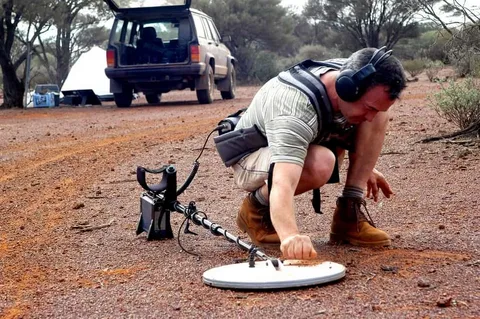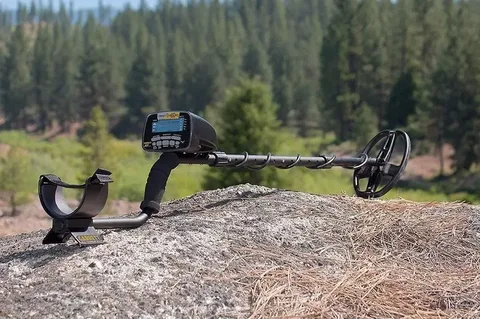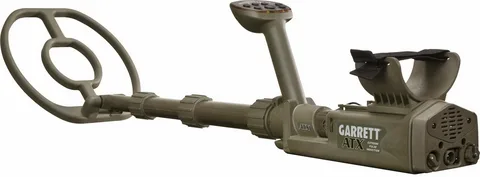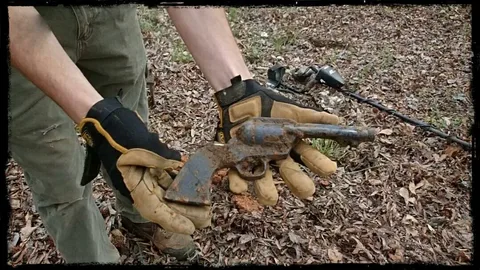Gold panning equipment is essential for anyone looking to try their hand at this popular and rewarding outdoor activity. Whether you are a beginner or a seasoned prospector, having the right tools can make all the difference in finding success. From pans and screens to sluice boxes and classifiers, having the proper equipment can greatly improve your chances of finding that elusive gold. In this guide, we will explore the essential gold panning equipment that every beginner and pro should have in their arsenal.
Essential gold panning equipment for beginners and pros includes a gold pan, a classifier, a snuffer bottle, and a magnifying glass. Beginners should also consider purchasing a gold panning kit, which typically includes these essential tools and sometimes additional items such as a vial for storing gold flakes and a booklet on gold panning techniques. Pros may want to invest in a sluice box, a rock hammer, and a gold prospecting metal detector for more advanced gold panning experiences. Additionally, proper clothing and footwear should also be considered essential equipment for both beginners and pros to ensure comfort and safety while out in the field.
The Essential Guide to Gold Panning Equipment

The Essential Guide to Gold Panning Equipment provides in-depth information on the various tools and equipment needed for successful gold panning. It covers everything from the basics of using a pan and classifier to more advanced gear such as sluice boxes, dredges, and metal detectors. The guide includes tips on choosing the right equipment for different environments and the best techniques for maximizing your gold recovery. Whether you’re a beginner or experienced prospector, this comprehensive resource is a valuable addition to your arsenal of gold panning knowledge.
Top 10 Must-Have Tools for Gold Panning

1. Gold pan – The most essential tool for gold panning, typically made of plastic or metal and used to separate gold from sediment.
2. Classifier – A sieve-like tool used to filter out larger rocks and debris, allowing you to focus on the finer materials that may contain gold.
3. Snuffer bottle – A small vacuum bottle used to suck up any gold particles found during panning.
4. Tweezers or pick – Used to pick out and retrieve any small gold nuggets or flakes from the sediment.
5. Magnet – A strong magnet can help separate any magnetic black sand or iron particles from the gold.
6. Shovel or trowel – Used for digging and scooping up sediment from the riverbed or stream.
7. Sluice box – A long, narrow box with riffles used to catch and retain gold as sediment is washed through it.
8. Gold sifting pan – A specialized pan with a fine mesh bottom for quickly sifting and separating gold from sediment.
9. Waterproof boots – Essential for keeping your feet dry and stable while standing in the river or stream.
10. GPS or maps – Important for finding and accessing gold-bearing areas, as well as ensuring you don’t get lost while out prospecting.
Choosing the Right Gold Panning Equipment for You

When choosing the right gold panning equipment for you, it’s important to consider a few key factors. Firstly, you’ll want to think about the type of gold panning you’ll be doing. Are you planning to pan in a river or stream, or will you be working in a dry desert environment? The type of terrain will impact the type of equipment you’ll need.
Next, consider the frequency and level of your gold panning activities. If you’re a beginner or casual panner, you may not need the same level of equipment as someone who is more experienced or plans to pan frequently.
It’s also important to consider your budget. There is a wide range of gold panning equipment available, so think about how much you’re willing to invest in your gear.
Finally, consider the size and weight of the equipment. If you plan to hike to your panning spot, you’ll want to choose lightweight and portable gear.
By considering these factors, you can choose the right gold panning equipment for your needs and make the most of your gold panning experience.
Pros and Cons of Different Gold Panning Gear

Pros and Cons of Different Gold Panning Gear:
Gold Pan:
Pros:
– Portable and easy to carry
– Good for beginners
– Can be used in water or dry areas
Cons:
– Limited in its ability to separate fine gold from black sands
– Can be time-consuming and tedious
Sluice Box:
Pros:
– Can process large amounts of material quickly
– Good for capturing fine gold
– Allows for hands-free operation
Cons:
– Less portable and more bulky than a gold pan
– Requires access to flowing water
Gold Panning Kit:
Pros:
– Includes all necessary gear in one package
– Usually comes with instructions for beginners
– May include additional tools like classifiers and snuffer bottles
Cons:
– Can be more expensive than buying each item separately
– Some kits may include low-quality equipment
Suction Dredge:
Pros:
– Can process large amounts of material in a short amount of time
– Can be effective in recovering fine gold from riverbeds
– Can reach deep into cracks and crevices
Cons:
– Expensive and not practical for casual hobbyists
– Restricted or banned in many areas due to environmental concerns
Gold Trommel:
Pros:
– Processes large amounts of material quickly
– Good for separating gold from gravel and other large debris
– Can be operated by one person
Cons:
– Expensive and requires access to water
– Bulkier and less portable than other methods.
Gold Panning Equipment: Beginner’s Buying Guide
See also: gold mining machine

Gold panning equipment for beginners typically includes a gold pan, a sluice box, a snuffer bottle, a magnifying loupe, and a classifier.
A gold pan is the most essential tool for gold panning, and it comes in various sizes and materials such as plastic, steel, and copper. A sluice box helps in efficiently separating gold from other sediments and is often used in conjunction with a gold pan.
A snuffer bottle is used to collect small particles of gold and is essential for extracting fine gold from the sediment. A magnifying loupe can help beginners in spotting small gold particles in the pan. And finally, a classifier is used to filter out larger rocks and debris from the sediment before panning.
When buying gold panning equipment, beginners should consider the size and material of the equipment, as well as any additional features that may improve their overall gold panning experience. It is also important to consider the portability and ease of use of the equipment, especially for beginners who may be less experienced in gold panning.
Some other optional equipment that beginners may consider purchasing includes a gold sniping tool, a gold vial for storing collected gold, and gloves to protect hands during panning. Overall, beginners should prioritize getting the essential equipment and then gradually invest in additional tools as they gain more experience in gold panning.
Maximizing Efficiency with the Best Gold Panning Equipment
Gold panning is a popular and efficient method for prospecting for gold in rivers and streams. To maximize efficiency, it’s important to have the best gold panning equipment. This includes a good quality gold pan, a classifier (or sifter) to help separate larger rocks and debris from the gold-bearing material, a snuffer bottle to easily extract small gold flakes, and a magnifying glass to help inspect and identify the gold you find.
Additionally, having a durable and comfortable pair of gloves can help protect your hands while panning, and a sturdy shovel or trowel can aid in digging and moving larger amounts of material. It’s also beneficial to have a container to store your gold and other valuable finds.
Investing in high-quality, durable equipment will not only improve your efficiency while panning for gold, but it will also make the experience more enjoyable and rewarding. By using the best equipment available, you can increase your chances of finding gold and make the most out of your prospecting efforts.
Upgrading Your Gold Panning Kit for Better Results
Upgrading your gold panning kit for better results involves investing in higher quality equipment such as a sturdy pan, classifier screen, and snifter bottle. You may also want to consider purchasing a sluice box or a gold panning kit that includes additional tools such as tweezers, magnifying glass, and a storage pouch. Additionally, educating yourself on proper techniques and strategies for gold panning can greatly improve your success in finding and extracting gold from rivers and streams.
Gold Panning Tools and Accessories You Can’t Do Without
Gold panning tools and accessories that are essential include a gold pan, which is the most basic and important tool for gold panning. It is typically made of plastic or metal and comes in various sizes and shapes. Another essential tool is the classifier, which is used to screen out larger rocks and debris from the sediment being panned. A snuffer bottle is also crucial for sucking up small flakes and nuggets of gold. Other important accessories include a magnifying glass, tweezers, and a small vial or container for storing any gold found. Additionally, a gold panning kit typically includes a variety of these essential tools and accessories in one convenient package.
DIY Gold Panning Equipment: Build Your Own Kit
DIY gold panning equipment kits typically include a variety of specialized tools and components such as a gold pan, classifier, snuffer bottle, vials, tweezers, magnifier, and even a small shovel. These kits are designed to provide individuals with the essential items needed to start gold panning on their own. There are many do-it-yourself guides and tutorials available online that offer step-by-step instructions on how to assemble and customize your own gold panning kit based on your preferences and needs. Building your own gold panning equipment can be a rewarding and cost-effective way to tailor your kit to your specific requirements.
The Latest Innovations in Gold Panning Gear
The latest innovations in gold panning gear include the development of compact, lightweight tools that are designed to make the process more efficient and effective. One example is the use of specialized pans with built-in riffles and traps to capture fine gold particles. Additionally, metal detectors equipped with advanced technology can help prospectors locate gold nuggets and deposits with greater accuracy. Other innovations include the use of suction dredges and high-powered water pumps to extract gold from riverbeds and streambeds. These advancements are aimed at improving the overall experience of gold panning and increasing the chances of finding valuable gold.

